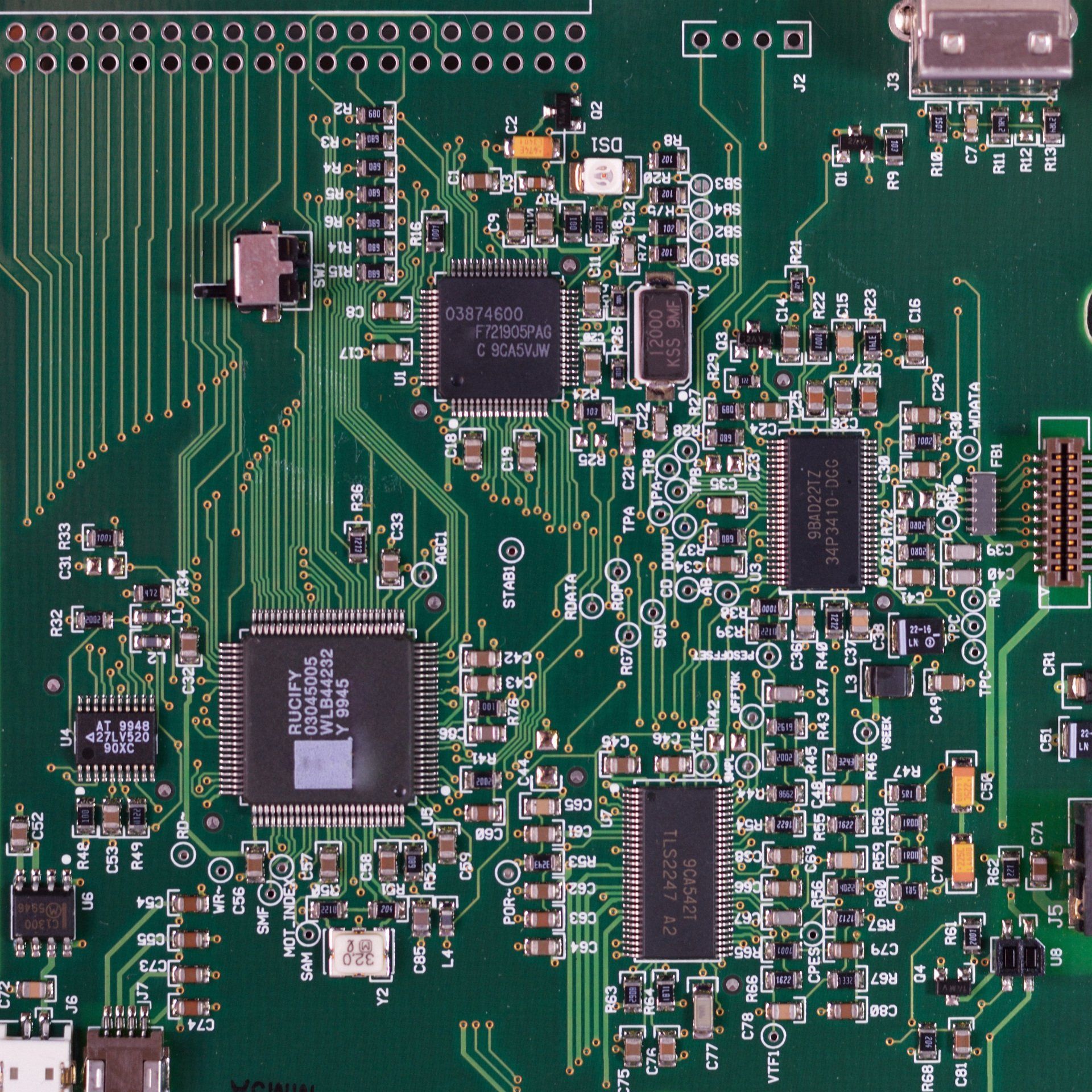Samsung $17B Semiconductor Factory Outside of Austin, Texas
Samsung Bringing Jobs to Texas
The new plant is expected to be operational by the first half of 2024 and employ more than 2,000 people. - Samsung Electronics said the Texas semiconductor factory will help meet the booming demand for chips used in cars and other electronic devices. Samsung Electronics announced plans to build a $17 billion semiconductor chip plant in Central Texas, Austin, next year, to address the global shortage of chips used in cars and other electronic devices. The chip plant is expected to raise Samsung's presence in the semiconductor industry, which has been dominated by Texas Instruments for many years. Samsung Electronics is one of the world's leading electronics companies and its presence in Central Texas is expected to bring more jobs and investments into this region. The new chip plant will be an important part of Samsung's global strategy for meeting rising demand for chips that are used in cars and other electronic devices.
Samsung's Semiconductor factory Austin Texas
In June of this year, Samsung announced plans to invest $17 billion in a new semiconductor manufacturing plant in Austin, Texas. This will be the first US chip plant for Samsung and will be its largest semiconductor factory worldwide. The investment is expected to help boost chip production for devices including smartphones and tablets. In addition, Samsung has also announced plans to build a new chip plant in Arizona that will focus on meeting increasing demand for US chips used in cars and other electronic devices.
The plant, located in Taylor, will be the company's largest contract chip manufacturer in the US and is expected to be one of the country's most sophisticated chips. Samsung Electronics is also looking to expand its existing facility in Austin, Texas by adding a sprawling complex that will become its largest memory chipmaker and one of the biggest worlds. The new facility will be used for making memory chips for Samsung Electronics' new line of smartphones and other products. With this investment, Samsung intends to become a major player in the global chip market, positioning it to compete against other major chip manufacturers such as Intel, Qualcomm and TSMC. The new manufacturing plant will bring hundreds of jobs to Austin with an estimated investment of $17 billion over the next few years. This is good news for both Austin and Texas as a whole as it continues to cement itself as a hub for innovation and technology within the US.
What does a Semiconductor Plant Produce?
A semiconductor factory produces a range of electronic components including transistors, diodes, capacitors, resistors, integrated circuits and microprocessors. These components are used in a variety of consumer electronics such as laptops, smartphones and televisions. In addition to these components, some semiconductor factories also produce other items such as sensors and optical semiconductors.
The Samsung Semiconductor Factory is one of the US Semiconductor production leaders with Qualcomm and TSMC
Samsung, the South Korean electronics giant, has recently announced plans to invest a great deal of money into a $17 billion semiconductor chip manufacturing plant in the Austin area. The plant is expected to create as many as 1,800 jobs and provide an economic boost to the local economy over the next ten years. According to a recent report in the Austin American-Statesman, this is just one of several chip factories that Samsung plans to build in Texas over the next decade.
Semiconductor Industry is Partly Funded by Us Government
In response, the Biden administration has begun to invest billions of dollars into domestic chip manufacturing in an effort to produce more chips and build more factories. This could potentially ramp up US semiconductor production to meet demand and help the US become less dependent on other countries for chip production. The Biden administration has already invested tens of billions in specific valuable pockets of the domestic semiconductor industry, such as a new plant in New York that will be used to manufacture chips. These investments are part of a larger effort by the administration to understand and address the latest US efforts in ramping up domestic semiconductor manufacturing capabilities, as well as helping other countries increase their own capabilities. This is especially important due to increasing global competition for chips by countries attempting to bolster their own domestic manufacturing capabilities.
The Biden administration has incentivized funding blitz to boost American chip manufacturing and move the manufacturing ecosystem forward. Companies like Intel, Apple, and AMD are the semiconductor companies that will receive the most incentives for their investments in production. A senior economic official has told reporters that this will create new jobs across the nation and produce a number of memory chip manufacturing capacity. The Biden administration also plans to incentivize semiconductor companies to build new factories and upgrade existing factories in order to construct chips for computers and other electronic devices. This investment plan will provide a much needed economic boost to these companies while helping consumers across the nation as they consume more of these chips in their technology products.
The shortage of these chips has hamstrung carmakers and other technology companies as they try to meet consumer demand for cars, computers and smartphones. The Biden Administration is investing in the semiconductor chip industry to ensure it can meet future demand from nations around the world. This investment plan is expected to create tens of thousands of new jobs across the nation and will provide billions in incentives for manufacturers to invest in their own production facilities. The Department of Commerce recently announced a new National Semiconductor Technology Center that will build a new factory and provide advanced tools for cutting-edge semiconductor technology. The center will also be used to train engineers in developing high-tech chips as well as provide access to advanced manufacturing facilities. Additionally, the CHIPS Act provides funding for start-ups with innovative technologies that can help build next generation factories and develop advanced chip designs. This will enable them to compete with larger companies in the global market. Overall, the US government’s commitment to investing in semiconductor technology has allowed major chip companies to continue producing chips at competitive prices while also providing resources for innovative technologies from startups.
This has created a strong foundation for the US to remain at the forefront of semiconductor technology and drive innovation across many fields such as advanced computing, biotechnology, and quantum information technologies. The establishment of the American Innovation and Competitiveness Act in 2017 was an important step in this direction, providing resources to boost American semiconductor research and development. Additionally, the National Science Foundation (NSF) has provided private sector investment through its Small Business Innovation Research Program that supports technology innovation by small businesses. This includes supporting chips and other advanced energy technologies used in modern computing and communications. The US government’s commitment to supporting semiconductors is essential for every piece of technology we own, including our cars.
Semiconductors are Necessary for Every Piece of Technology Own Including you Car!
Semiconductors are essential building blocks in consumer electronics, computational building blocks, cameras computers, medical devices, and smartphones cameras. Semiconductors also play a crucial role in manufacturing other critical goods like hypersonic guided missiles. Without semiconductors, your cell phone would not be able to access the internet. They are a crucial element of our technology and consumer electronics that we use on a daily basis. The US Government understands that these semiconductor chips will be necessary for every piece of technology we own including our cars.
To make sure that we can stay on the cutting edge of semiconductor technology, they are conducting semiconductor research, supporting regional technology hubs, and creating helpful incentives to help support the semiconductor manufacturing. For example, they have provided a chips bill to National Semiconductor so they can create their own technology center and support participating private firms. This public-private consortium is also supported by the National Science Foundation which helps fund research and manufacturing research. All of these efforts help ensure that the US Government is staying ahead of the curve when it comes to semiconductors and provide us with cutting edge chips for our cars.
The Netherlands and Japan, both makers of some of the world’s most advanced equipment for manufacturing semiconductors, agreed on Friday to join with the U.S. in barring some shipments of their most high-tech machinery to China. https://t.co/xjsy8c75vv
— The New York Times (@nytimes) January 29, 2023


Dutch, US and Japanese officials have agreed to stop selling semiconductor technology to China. The power a semiconductor shortage has is quite amazing https://t.co/pLKXvOXYvW
— Ricky (@richolas410) January 28, 2023
We Handle Every Single Aspect
Contact Us Today for Your
Free 6 Month Marketing Plan
Contact Us
We will get back to you as soon as possible.
Please try again later.
-
Digital Visibility
Digital VisibilityPeople are searching for your, we make it easy for them to find you.
-
Full Stack Development & Marketing
ButtonWebdesign + Sales Funnels + Conference Scheduling
-
Social Growth
ButtonTargeted Social Engagment Startegies Focused on your Journey
-
Website Development
ButtonA proper website gives potential consumers immediate trust in your brand
We offer full Digital Marketing Services so that you can focus on everything else in your business. Austin's online marketing services have proven sustainable and profitable. ADWS develops dedicated websites that talk to consumers and increase sales. Our Team works with customers to manage their entire marketing strategy including online advertising, social media marketing, online sales, and customer service.











